What sells at Flea Markets? This question transcends business and taps into human interaction, nostalgia, and excitement. Flea markets, generally seen as gatherings of junk, can be described as entrepreneurial centers where cultures mix. They also represent narratives beyond trade each item has its history that waits for rediscovery by another person.
These busy aisles of flea markets are more than just commodities; they carry memories, demonstrate craftsmanship skills, and capture societal fads. It is where an old, worn leather jacket symbolizes youthful rebelliousness, or a chipped teacup brings back memories of Sunday brunches long gone.
However, beneath the chaotic array of eccentric displays and haggling banter lies an intricate economy that moves beyond mere money exchange. Flea markets serve as business nurseries for small-scale enterprises by providing artisans, collectors, and entrepreneurs platforms to display their products to different people. They foster connections within communities, breathe life into forgotten treasures, and enable individuals to monetize their passions.
Thus, let us go beyond simple transactions to explore what sells at flea markets so we may explore deeper into the rich tapestry of stories, dreams, and human relationships that define vibrant marketplaces like these.
Understanding what sells at flea markets.

To understand what sells at flea markets, it is crucial to learn from where these markets originated and how they have changed over time. Flea markets have their roots in bustling bazaars and ancient marketplaces where traders from various lands would meet to exchange goods and tales. Curiously, the term ‘flea market’ has some fascinating history behind its name, referred to as “marché aux puces” in French, an allusion to the second-hand nature of many items sold here.
What’s different about flea markets than other retail spaces is their inclusive nature. Every object, irrespective of its age, condition, or origin, has a stage to perform on, thus challenging traditional dictums that govern retail structures. In line with this perspective, amidst the chaotic mixture of flea-market wares, one may find two objects, such as a dusty vinyl record and a handmade necklace, fighting for attention.
Flea markets, which have developed from haphazard get-togethers into organized events over time, attract not only bargain hunters but also curious tourists and discerning collectors. They have become cultural destinations where neighborhoods meet to shop and socialize, share stories, and commemorate shared passions.
Flea markets are not famous for commodities alone; they are also loved for such experiences as shopping there provides. When they visit such markets, they go on treasure hunts seeking rare vintage stuff or unique items speaking directly to someone’s heart. They keep visitors returning because these lucky finds thrill them when stumbled upon by chance, converting casual shoppers into passionate fans.
Understanding flea markets transcends beyond economics; it involves embracing various perspectives on life issues that define them as lively spaces in which people live their lives every day in diverse ways. So, let us penetrate more deeply into what sells at flea markets while knowing each transaction has a hidden narrative.
20 Popular Items to Sell
Experienced tradesmen and prospective entrepreneurs need to know the line of items that can be sold in a flea market. We have grouped some of the most popular merchandise into four categories to do this. These include vintage collectibles, antiques, handicrafts, and homemade crafts, as well as other types of merchandise.
Vintage and Antique Collectibles
Vintage and antiques attract people because they have an undying appeal brought about by their nostalgia. In this sub-section, we shall look at five common types under the genre, explaining why they are still loved even today on flea markets.
Vintage Clothing
From retro dresses to classic trinkets, vintage clothing lets people show who they are through unique items from the past.
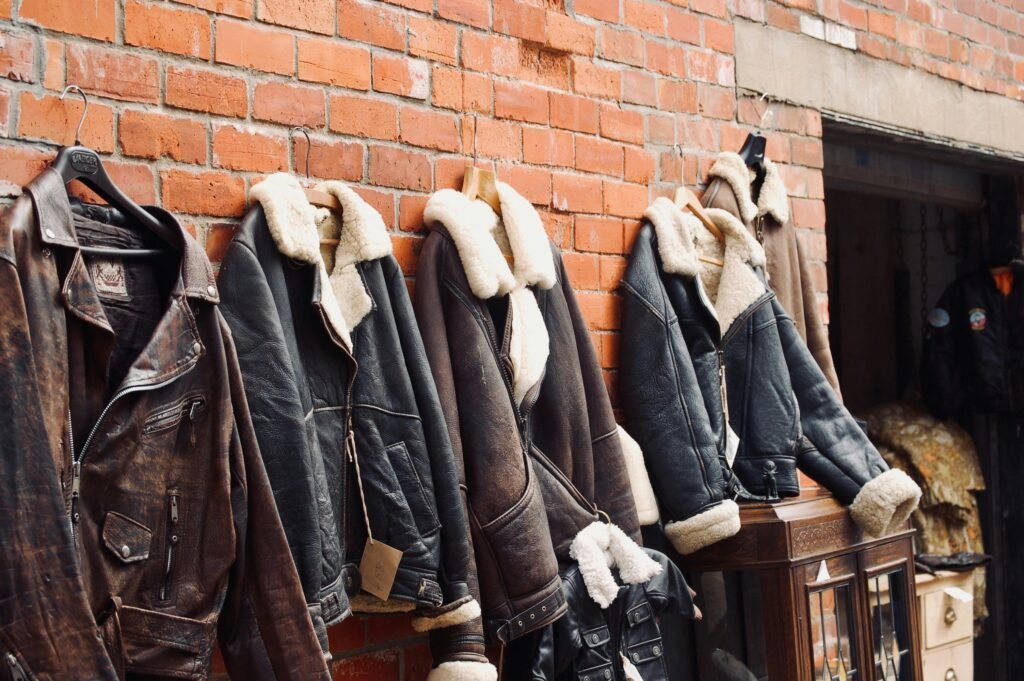
Retro Memorabilia
Things that make you think of the past, like old posters, signs, and movie memorabilia, bring back good memories and give any room a bit of retro charm.
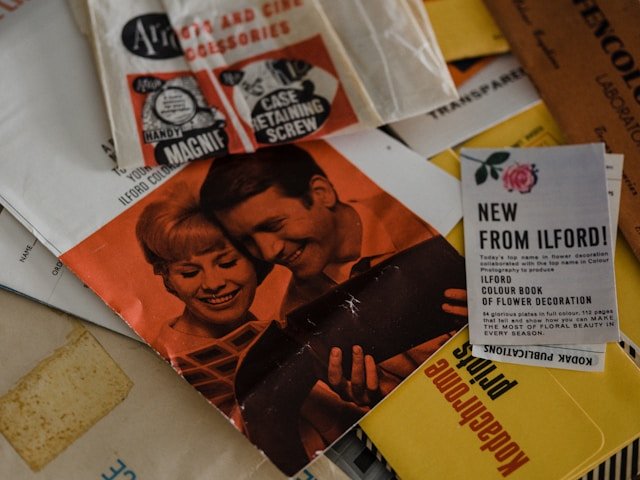
Antique Furniture
Antique furniture makes a statement and brings character and warmth to any home or office with its fine workmanship and classic style.
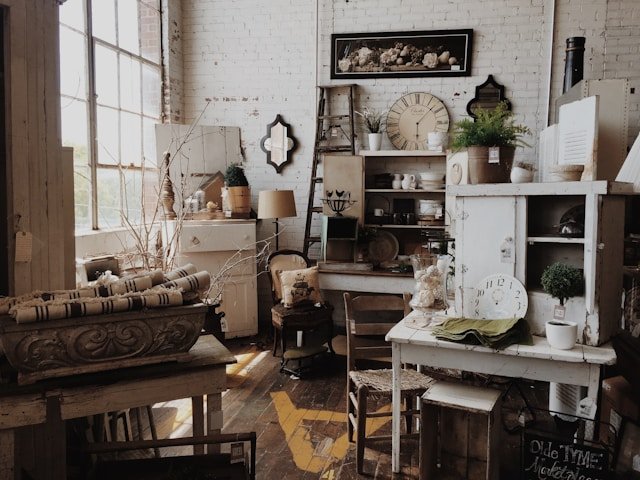
Old Toys
Toy collectors and fans go crazy at flea markets, looking for old toys like classic action figures and old-school board games that remind them of how much fun they had as kids.

Collector’s Items
Limited-edition comics, old vinyl records, and coins are just a few examples of rare and unique collectibles that serious collectors look for as valuable adds to their collections.

Handmade Crafts and Artisanal Products
In a world where mass production is common, handmade crafts and goods stand out because of their quality, skill, and personality. The next part will discuss five types of handmade goods that people like, such as unique, genuine, and authentic items at flea markets.
Handmade Jewelry
Each piece of hand-made jewelry tells a story, shows the artist’s expertise in craftsmanship and originality, and allows customers to wear art on their bodies.

Arts & Crafts Accessories
From knitted scarfs to leather wallets, handmade accessories blend purpose with taste making them stylish complementary pieces for various wardrobes.
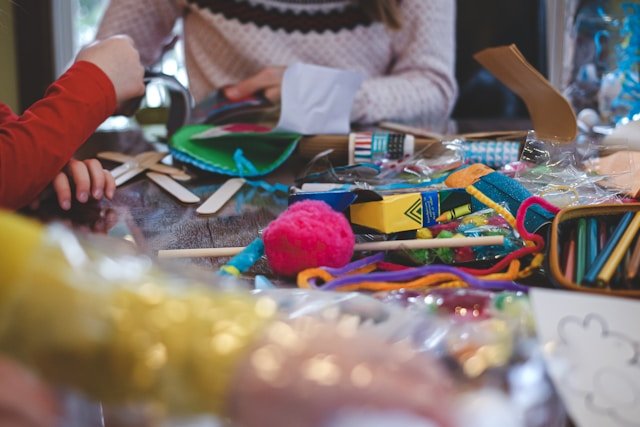
Gourmet Foods
Homemade jellies, artisanal cheeses, and small-run chocolates are some of the gourmet delicacies that appeal to food lovers who want unique tastes as well as locally made ingredients.

Artistic Works
Paintings, sculptures, and mixed-media works all demonstrate artists’ abilities and add beauty and inspiration to any room

Individualized Goods
Handmade candles or natural skin care products such as these help buyers feel that they possess something more than just a production line product.

Retro Finds and Secondhand Goods
Retro finds and secondhand goods are appealing for several reasons, including the fact that they are inexpensive, environmentally friendly, and nostalgic. Within this segment, we will investigate five categories of products that struck a chord with customers who frequent flea markets in search of one-of-a-kind treasures from the past.
Retro Finds
For retro finds, this term encompasses a broad array of merchandise such as vintage cameras and mid-century furniture that give consumers’ spaces an air of wistfulness and distinction.
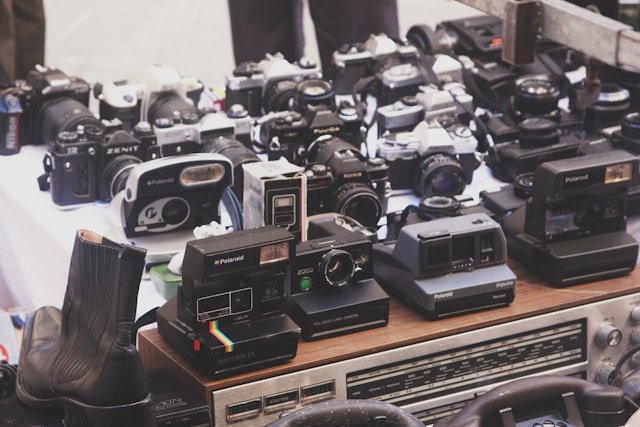
Secondhand Goods
Secondhand goods encourage sustainability and frugality by giving buyers great quality products for a fraction of the price. These include items like lightly used electronics, renovated home appliances, and pre-owned clothes.

Thrifted Items
Thrift store treasures can be found in vinyl records, timeless novels, and quirky trinkets- give customers the excitement of discovery and the joy of finding hidden gems. They are things sold after once being owned by someone else.

Bargain Buys
Deals on Everything from Household Essentials to Unique Curiosities: Flea markets offer deals on various items, making every purchase feel like a win. Thus, they are a paradise for bargain shoppers.

Preloved Treasures
Every preloved treasure has its own story to tell, whether it’s an heirloom vintage handbag or a cherished piece of art ready to find another loving home.

Eclectic and Unique Wares
Flea markets are goldmines of diverse and unusual items that cannot be easily classified. In this subsection, we will explore five broad types of unique products that hold people’s interest and will delight customers looking for something completely different.
Unique Wares
Buyers who want to express their style and personality can find unconventional and offbeat items like handmade ceramics, odd home décor, or whimsical presents.

Eclectic Goods
Flea markets represent a melting pot of cultures with a mix of ethnic artifacts, global textiles, and ethnographic artifacts that demonstrate the fullness of human expression and respect for history.

Quirky Merchandise
Adding quirky merchandise, such as kitsch souvenirs or unusual novelties, can personalize a collection or living area.

Hidden Gems
Amongst a pile of odds and ends in a flea market lie some of the best finds known by real flea market lovers, which only need a discerning eye and curious hands to uncover.

Uncommon Finds
When you want something extraordinary, visit flea markets. These markets offer a wide variety of unusual finds, from oddities and curiosities to rarities and freaks.
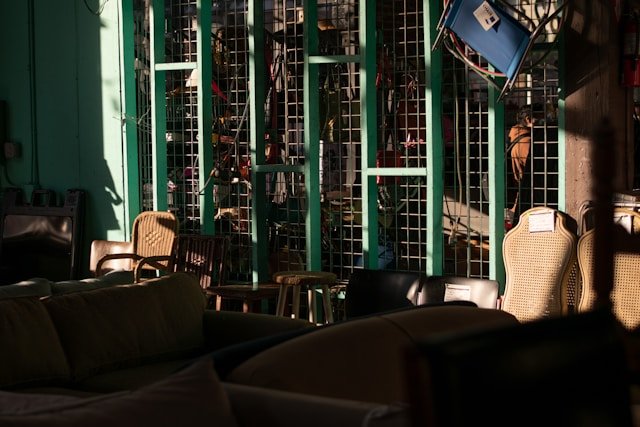
Strategies for Successful Selling
Selling at flea markets is not just about setting up a booth and showing products. It involves planning, intelligent advertising, and excellent customer service. In this chapter, we will examine some key strategies vendors can use to increase sales and maximize achievements in the busy flea market environment.
Pricing Strategies
- It is essential to price competitively to pull buyers and make more sales while maintaining profitability.
- Look into aspects such as item scarcity, and state plus market demand before pricing them.
- Offer package deals, bulk purchase discounts, or special promotions to improve sales.
- Assessing and adapting prices periodically according to market trends or client feedback is essential.
Marketing and Presentation
- Make attractive displays that effectively showcase your products to attract customers.
- Use signs, banners, and branding materials to establish a strong presence and communicate your brand identity.
- Interact with customers by engaging them in interactive demonstrations, product sampling sessions, or, better yet, live entertainment aimed at enhancing their shopping experience.
- Leverage social media sites and online platforms to publicize your involvement in flea markets and draw potential buyers too.
Building Customer Relationships
- Be available, responsive, courteous, and considerate of customer inquiries or feedback because customer service should always be prioritized.
- Create relationships with regular purchasers by recommending things based on individual preferences or offering varying price ranges through loyalty awards.
- Customer feedback encourages reviews, which allows you to know what works best for you regarding your products and services.
- Attending local functions highlighting fellow traders’ businesses may nurture a friendly atmosphere within which his/her stand falls under this section of building customer relationships.
Logistics and Organization
- Ensure booths are set up effectively to maximize space usage and ease clients’ shopping efforts.
- Keep stock levels up, organize the inventory, and make it easily accessible so there are no lost sales or missed payment opportunities.
- Be knowledgeable about logistical requirements such as permits, licenses, insurance, and other relevant documents required by law.
- To ensure your goods are safe and risks are minimized, you must plan for transportation, storage, and security measures in advance.
These strategies will help flea market vendors become more visible, attract more customers, and ultimately sell their products better. For further inspiration on creating eye-catching displays, check out this article on visual merchandising tips. Being flexible, creative, and customer-oriented is vital for thriving in this dynamic marketplace.
Legal Considerations and Logistics

Difficulties in the legal and logistic parts of flea market selling, however, are critical to the smooth running of any enterprise. In this part, we will tackle some of the permits, licenses and logistical issues that vendors should be aware of if they want to survive in flea market environments.
Permit and Licensing Requirements
- Research obtaining necessary permits or licenses to sell at flea markets in your area. Depending on your business, these can include vendor licenses, sales tax permits, or food handling permits.
- Get familiar with local regulations governing sales, signage, and operating hours to avoid possible fines or penalties.
- To show compliance with authorities and customers, keep records of all required certificates/licenses within easy reach at your booth.
Logistics and Setup
- Therefore, planning transportation, parking, and booth setup is necessary for smooth functioning during market days.
- Buy good display fixtures, branding materials, and signage to enhance the visual appeal of your booth and attract customers.
- Therefore, organize goods to maximize space utility, making it easy for clients to browse through them.
- Implement security measures such as locks, and surveillance cameras, or hire security personnel in case merchandise needs to be protected from theft or damage.
Addressing these legal considerations proactively while deploying robust logistical strategies can minimize risks among flea marketing vendors, allowing them to focus on maximizing their own sales levels (and profitability). Flea market vendors need to know regulatory requirements by being organized and maintaining security because this ensures sustainability for one’s business venture amid the vibrant world represented by these markets.
To explore more insights on maximizing profitability in the gig economy, check out our article on Unlocking the Numbers: How Much Do Door Dashers Make?.
Maximizing Profit and Sustainability
While outside the bustle of sales and transactions, flea market vendors can avert loss making and thereby promote their businesses with sustainability and ethical practices. In this section, we will discuss new ways to ensure high profitability while embracing environmental responsibility and community involvement.
A. Renovating and Reusing
Adopting these processes can make normal items unique in their own right, adding worth and attraction to products while decreasing waste. Vendors can source materials from thrift shops or throw-away stock and repurpose them into new consumer products. From upcycled clothes and accessories to reclaimed wood furniture, such eco-friendly products are in line with consumers who are interested in environment-friendly issues ultimately leading to a more sustainable marketplace.
B. Community Engagement and Collaboration
Flea markets represent a platform where local artisans, craftsmen, or community groups should collaborate with vendors allowing for business partnerships. To do this they have to display locally made items; support local small enterprises participate in community events etc. Businesses like themed markets, temporary stores, or charity drives serve as traffic sources and contribute to a goodwill spirit within different communities.
C. Embracing Diversity and Inclusivity
By diversifying product offerings and marketing strategies, flea markets can reach a broader clientele from different backgrounds. A vendor can show varied types of goods influenced by various cultural backgrounds as an example of human diversity and richness on Earth. By creating open spaces for all members irrespective of race or origin, flea markets could become centers for cultural contact boutiques that enrich the overall experience for sellers and customers.
D. Education and Empowerment
When equipped with information & resources traders get through challenges adapt to changes in market trends, and sustainably grow their businesses. Flea market organizers would organize workshops and training mentorship programs on business development marketing strategies, as well as sustainability. When provided with the tools and skills necessary for success, flea markets can be incubators of thriving entrepreneurship and innovation resulting in economic empowerment and social mobility opportunities within the community.
By incorporating these strategies into their business practices, flea market vendors can increase profit margins while promoting sustainability, inclusiveness, and ethical behavior in their marketplace. Vendors who embrace creativity, work together, and are conscious of what they buy or sell in the flea market change it to a dynamic socio-economic hub that promotes the exchange of cultural beliefs among others, this is evident by how the sellers, buyers, and societies benefit from such businesses.
“Turn your passion into profit and your dreams into reality. Happy selling!“
Got Questions? We’ve Got Answers! Your Ultimate Flea Market FAQ
u003cstrongu003eWhat are some unique strategies for attracting customers to my flea market booth?u003c/strongu003e
Beyond traditional signage and displays, consider incorporating interactive elements such as live demonstrations, workshops, or product samples to engage passersby and pique their interest. Emphasize the uniqueness and story behind your products, and leverage social media platforms to generate buzz and attract a broader audience to your booth.
u003cstrongu003eHow can I differentiate my products in a crowded flea market market?u003c/strongu003e
As such, the focus should be on creating an unforgettable and engrossing shopping experience for customers alongside high-grade products. The interactions should be personalized, the story of each product shared, and any unique attributes like artisanal elements noted. Consider having exclusive items not sold elsewhere in other stores or with limited editions; this will draw customers because they feel that certain things are rare to find and may have to run for them.
u003cstrongu003eIs selling at flea markets profitable?u003c/strongu003e
Flea market profitability depends on factors such as product choice, price policy, and operational effectiveness. However, profitability is not measured only in monetary terms; flea markets bring intangible benefits like community links, artistic expression, and self-satisfaction, which lead to overall success.
u003cstrongu003eWhat sells best at a flea market?u003c/strongu003e
While vintage items and handmade crafts often steal the spotlight, niche products catering to specific interests or subcultures can also perform remarkably well. Consider tapping into emerging trends or underserved markets to create a unique selling proposition and stand out.
u003cstrongu003eWhat not to sell at a flea market?u003c/strongu003e
While flea markets welcome a wide array of products, vendors should exercise discretion when selling items that may be prohibited, illegal, or morally objectionable. Avoiding counterfeit goods, hazardous materials, and culturally insensitive products not only upholds ethical standards but also preserves the integrity and reputation of flea markets as inclusive and responsible marketplaces.

